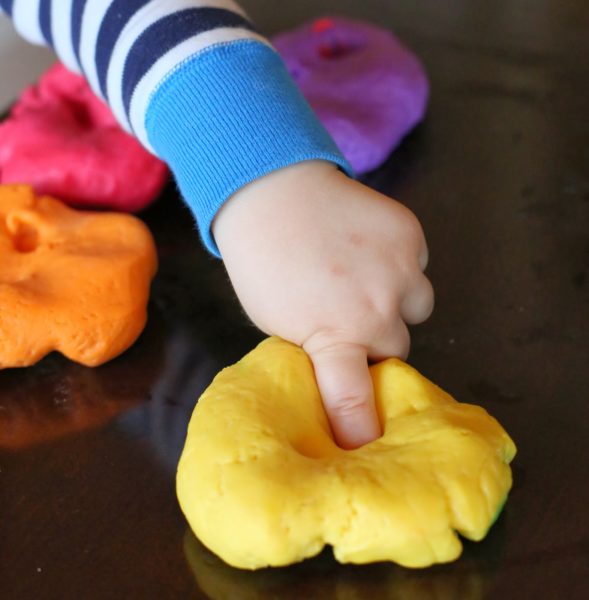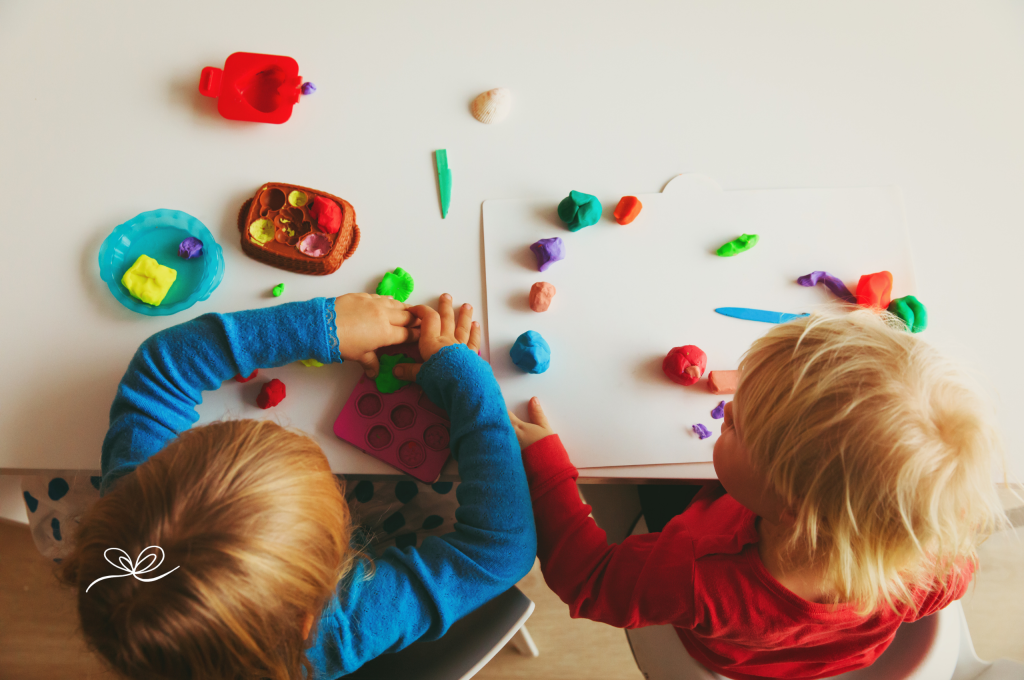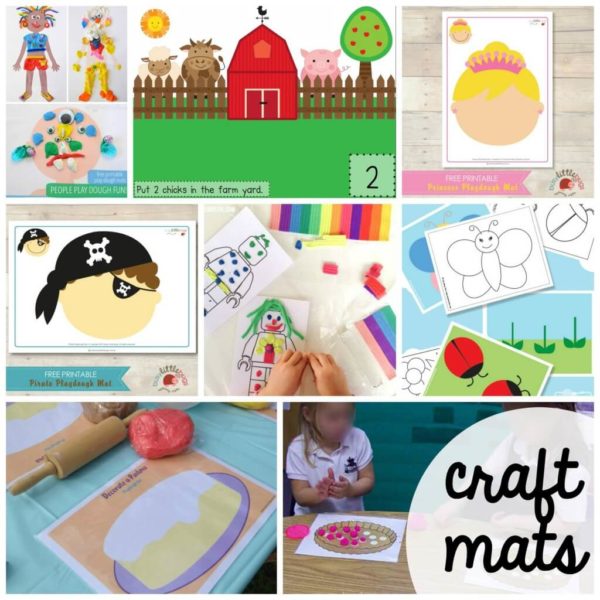We’ve all been to the birthday party where the kid gets Play-Doh as a gift and the parents make a joke about how they will “lose” that gift because it’s so messy. I’m here to tell you
BUY THE PLAY-DOH, GIVE THE PLAY-DOH!
If using it at home with your child I would highly recommend homemade play-doh for a few different reasons. It’s cheap to make and makes more than what typically comes in the little tubs, and although it doesn’t taste good it is safe to eat in case your little one decides to try a bite. It’s also easy to clean and is less likely to stain the carpet.
Here is an Easy At-Home Recipe for Play Dough.
However, I do know life is crazy busy, and sometimes purchasing it is just much more convenient, which is why I have linked Play-Doh above so you can purchase by clicking the photo or here.
developmental benefits of play dough
I use Play-Doh all the time with my therapy kiddos. The developmental benefits range from sensory to strength and fine motor, and it’s so fun they don’t feel like they are working or learning. Play-Doh specifically benefits upper extremity strength with the pushing and pulling motions, these motions trickle down into improving fine motor coordination and control. Everything works proximal to distal in the body. This means from the center outwards, by improving shoulder and arm strength and control you will also improve the wrist and finger strength and control.

fine motor benefits of play dough activities
- Pincer grasp– the index finger and thumb coming together.
- Finger isolation– Having the child push into the dough following verbal commands of what finger to use.
- Digital pronated grasp– precursor to a mature tripod grasp.
- Hand-eye coordination
- Bilateral coordination
For smaller kids and toddlers introducing play dough can be tricky. Especially if your kiddo has texture issues. This can be a very overwhelming thing and could actually make them very defensive toward the activity and make them not want to play with it at all. Some tips I have for introducing play-doh for the first time are to start by breaking off a small piece for you and a small piece for them. Roll it into a ball and let them watch you poke your finger into it pressing it down, they will most likely try to imitate what you did and because you did it they will be less intimidated by it being new. Line some small balls side by side and let them poke them all down, pinching the small balls is also great! It’s still smaller amounts and incorporates using a pincer grasp, which typically begins to develop by 9-10 months.
Looking for more fine motor activities? Check out 10 At-Home Activities to Build Fine Motor Skills.
7 at-home play dough activities
- Potato smasher– press into a ball of dough using the potato smasher engaging the arm and shoulder muscles while also grasping onto and controlling a tool. This is a fun alternative to simply pressing down onto the doh.
- Rolling out with a pin- using a rolling pin requires both arms to work together, it engages the muscles while pressing down and also works on the range of motion of the elbows and shoulders. Have them roll out the dough and press beads or buttons into it isolating their index finger to press.
- Cookie cutters– always a fun time for imaginative play, playing “baker” and “making cookies”.
- Golf tees/straws- after rolling out the doh pressing golf tees or straws that have been cut smaller is a great way to work on fine motor control and precision.
- Fork- rolling the play-doh into small balls and piercing it with a fork is a great way to introduce the use of a utensil. Have your child pierce the ball and transfer it into a container. This will help carry over into mealtimes when they begin to use utensils when eating.
- Googly eyes– fine motor control and precision but also using their imagination to create a creature or monster.
- Kid scissors– I always introduce “snipping” with play dough instead of paper. Rolling the dough into a snake and having them snip small pieces is so much easier than trying to manipulate paper. This will improve scissor control and build confidence before adding the extra difficulty of maneuvering the scissors and paper simultaneously.
Play Dough Mats
Play Dough mats are also a new trend that has become very popular. I have used these both in person and via teletherapy by sharing my screen and having the child copy what they see. You can match colors, create shapes, form letters, I have one for making teeth for a mouth and clothes for a person. I highly recommend these! They are fun to do alongside your child but they also are a great way to keep them occupied for independent play while building developmental skills.
*I would suggest either having them laminated or slide them into page protectors so they will last longer and not stain. (:
In addition to the free play dough mats linked above, these silicon multi-purpose craft mats are great for messy crafts like the 7 At-Home Play Dough Activities. They make the clean-up process much easier!
Have fun!
activity related supplies:







